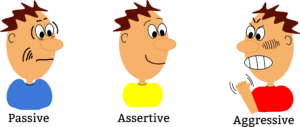

The behaviour modification paradigm posits that behaviours are learned. The processes of learning these behaviours may be different. Behaviours can be adaptive or maladaptive. Adaptive behaviours are those which help the individual to deal effectively with the changing demands of the situations and hence leading to increasing quality of life.
Maladaptive behaviours are those which are associated with ineffective dealing with the demands of the situations, thereby, leading to poor quality of life. It is, therefore, essential that the management, parents, health professionals and other people in similar position should know how behaviour of people can be built and modified.
Principles of behaviour modification
All Behaviours are learned whether the behaviours are adaptive or maladaptive. The basic learning principles can be classical conditioning, operant conditioning, social learning, vicarious learning and insight learning.
1. Behavioural problems are learned maladaptive patterns of behaviours.
2. Maladaptive Behaviours themselves are the problem, not underlying problems. Maladaptive Behaviour, having been learned, can be unlearned (extinguished), and replaced with new learned Behaviours.
3. The situation under which a particular behaviour is learned is not as important as what are the factors which are maintaining the problematic Behaviours.
4. Changing behaviours involve applying precise, specific, and easily replicated reinforcers.
5. It is assumed that humans are the product and the producer of the environment.
6. Success is measured in terms of specific behavioural changes.
Based on scientific principles of behaviour, such as classical and operant conditioning as well as observational learning, behaviour therapy applies principles of learning such as reinforcement, extinction, shaping of Behaviour, and modeling to help a wide variety of clients with different problems. Emphasis is on precision and detail in evaluating psychological concerns and then assigning treatment methods that may include relaxation, exposure to a feared object, copying a behaviour, or role playing. Its many techniques include those that change observable behaviour as well as those that deal with thought processes. Behaviour modification programs aiming at behavioural change should follow certain criteria. These include
1. Maintain the behaviour change for a clinically significant period of time.
2. Enhance and maintain the client’s compliance to therapeutic program.
3. Contain a combination of techniques as well as global life style modification.
4. Facilitate the development of motivation and decision making skills.
5. Replace maladaptive habit patterns with alternative behaviours.
6. Training the client adaptive ways of dealing with problem situations.
7. Making use of client support system to enhance treatment generalization effects.
There are various techniques that are useful in developing adaptive/desirable Behaviours and minimizing maladaptive /undesirable Behaviours in children. There are two broad goals of using Behaviour management principles. These are:
1. To increase the frequency of desirable behaviours and
2. To decrease the frequency of undesirable behaviours.
Desirable behaviours are those that the parents want the child to do e.g., being co-operative, help others, etc. Undesirable behaviours are those that the parents want the child not to do e.g., crying, shouting, fighting etc. Some of the tips useful for these goals are :
1. Promoting desirable behaviours: Reinforce/encourage the child to do desirable Behaviours by giving rewards like praise saying “Very good, Excellent”, or hugging or kissing the child, material rewards like eatables. Keep changing the rewards. Explain to the child in very simple language why the reward is given. Reinforcement should be prompt and consistent to build desirable Behaviours in the beginning. As the child starts to learn desirable Behaviours, then reinforcement should be made intermittent. It is desirable to mix social and material forms of reinforcements.
2. Stopping/minimizing undesirable behaviours: When the child does some undesirable behaviours like throw away the objects, hitting others, the best way of modifying it is taking away child’s privileges like withholding love, decrease the time the of play etc. Here it is also important to tell the child why his/her privileges are taken away. When he/she does desirable behaviour, go and reinforce. Learn to ignore minor breaking of rules. Spanking need to be avoided as it is counter productive and often leads aggressive behaviour in the children and anger towards the person who is helping the child to learn better ways of expressing negative emotions. Since each child is unique, therefore as per child’s temperament and likes and dislikes, the above principles should be used.
Other important points to remember are:
1. Be your child’s best role model.
2. Clearly tell the child what is allowed and what is not allowed
3. Specify clearly what behaviours are allowed and which are not e.g., “hitting, shouting, crying etc not allowed, helping others, playing quietly, doing the work are allowed”
4. Always give time to child to play
5. Allow them to express their concerns and try to listen and understand them
6. Learn to give choices to children to help them making decisions and becoming more responsible. Parents’ role is to facilitate children’s decision making.
7. Always focuses and remember the child’s strengths and strengthen them.
8. Follow family rituals and meetings
Applications of behaviour modification
Behaviour modification is used in the management of clinical and non-clinical conditions. It is used in the management of childhood disorders like Attention Deficit Hyperactivity Disorder, Autism spectrum disorders, intellectual developmental disorder formerly known as intellectual disability/mental retardation, nocturnal enuresis and psychiatric conditions like GAD, OCD, panic disorder, phobic disorders, pain disorder, somato form disorders, substance abuse disorders, schizophrenias and other mental health issues. It is also used in medical disorders like menstrual related disorder, cardiovascular disorders, dermatological issues, oncological disorders etc. Behaviour therapy principles and techniques are also used in many non-clinical conditions like social skills deficits, poor self-esteem, academic difficulties, relationship issues and host of other life challenges.


Dr. Mustafa Nadeem Kirmani
Associate Professor & Head M.Phil
Department of Clinical Psychology, Faculty of Behavioral Sciences, SGT University, Gurgaon, Haryana.
Dr.mnkirmani@sgtuniversity.org Ph: 08295320920/08267871886











